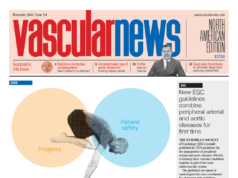CytoSorbents has called attention to a new publication which reports on the use of intraoperative haemoadsorption using the company’s technology to reduce perioperative bleeding complications in patients with acute type A aortic dissection who were either on the direct oral anticoagulant (DOAC) rivaroxaban (Xarelto, Janssen and Bayer) or the antiplatelet drug ticagrelor (Brilinta, AstraZeneca) at the time of urgent on-pump cardiac surgery.
The paper—authored by Kambiz Hassan (Asklepios Klinik St Georg, Hamburg, Germany) and colleagues—was recently published in the peer-reviewed journal, Annals of Thoracic and Cardiovascular Surgery.
The authors completed a retrospective analysis of 171 consecutive patients undergoing urgent surgical repair for acute type A aortic dissection between 2014 and 2020 and identified 21 patients (12.3%) who were either on rivaroxaban (n=9) or ticagrelor (n=12). Among these 21 patients, 10 patients received intraoperative haemoadsorption, and their operative and clinical outcomes were compared with the 11 patients not treated with intraoperative haemoadsorption.
Baseline characteristics were generally comparable between the two groups, however, haemoadsorption patients were older (mean age 75 vs. 62 years) and had higher perioperative risk based on the calculated EUROSCORE II scale (17.1 vs. 10.6; higher score reflects higher risk for complications and mortality).
Although the operative techniques and duration on cardiopulmonary bypass were similar between the two groups, total operation time was significantly shorter in the haemoadsorption group (286±40 minutes vs. 348±79 minutes, p=0.045), presumably due to less time required to achieve haemostasis at the end of the operation.
Most importantly, CytoSorbents highlights in a press release, intraoperative haemoadsorption (vs. without) was associated with favourable clinical outcomes following urgent type A aortic dissection surgery, including:
- Positive trend in lower 30-day mortality: 10% (1/10) vs. 27.3% (3/11)
- Zero need for reoperations (vs. 18.2% without haemoadsorption)
- Significantly lower mean 24-hour chest tube drainage, an independent predictor of postoperative morbidity and mortality (482±122 ml vs. 907±427 ml, p<0.001)
- Significantly fewer platelet transfusions (p=0.049)
The above clinical benefits translated to shorter median intensive care unit (ICU) length of stay in patients treated with haemoadsorption (four days) compared to those without (nine days).
Efthymios N Deliargyris, chief medical officer of CytoSorbents stated: “This new publication extends the evidence for clinical benefit with intraoperative antithrombotic removal using our haemoadsorption technology beyond coronary artery bypass grafting (CABG) and into additional complex cardiac operations, such as acute type A dissection aortic surgery. All urgent cardiac surgeries are complex and carry high risk for complications, but as any cardiac surgeon will attest, operating in the presence of antithrombotic drugs such as ticagrelor or DOACs can result in significant bleeding complications which can negatively impact patient outcomes and increase costs.”
Deliargyris concluded: “These encouraging data, though from a small single-centre study, are consistent with the published literature on the use of our technology to reduce bleeding complications from cardiothoracic surgery in patients on antithrombotic drugs. Furthermore, it validates our strategy to include patients undergoing urgent aortic surgery in both the STAR-T and STAR-D trials. We plan to incorporate these new data in our recruiting and training efforts with study sites. The US STAR-T and STAR-D trials, evaluating the use of DrugSorb‑ATR for intraoperative removal of antithrombotic drugs during urgent cardiothoracic surgery, are our top priorities. We remain laser-focused and are dedicating all necessary resources to drive enrolment completion of these two studies in the next 12–18 months to support potential future FDA [US Food and Drug Administration] marketing approval.”













